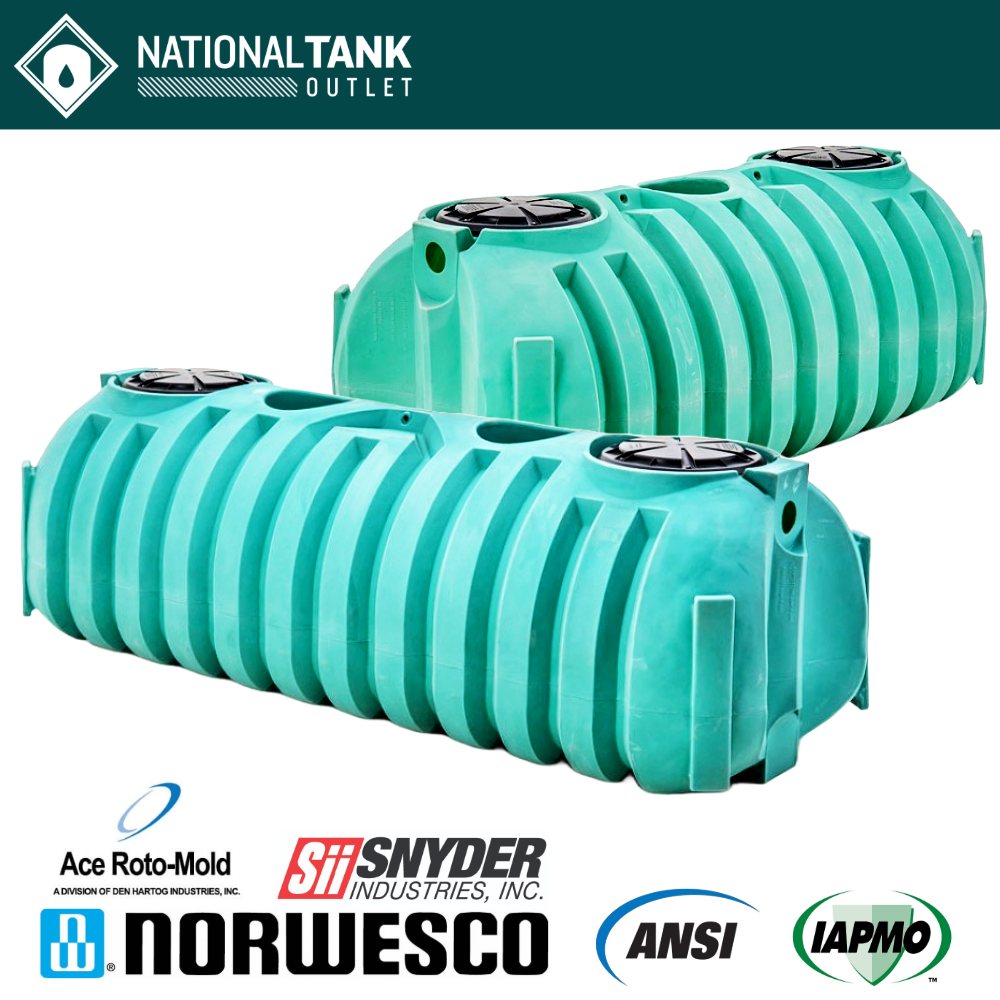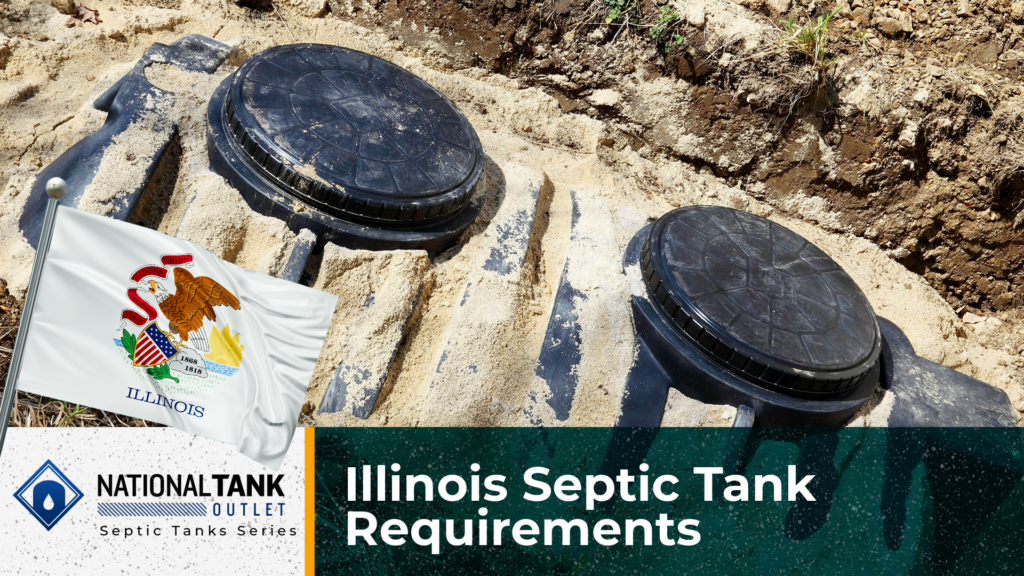
For many Illinois residents residing outside the reach of municipal sewer lines, septic tanks are the silent workhorses in managing wastewater generated on the property every day. These vital systems quietly treat household waste, ensuring sanitation while protecting the health of the public and the environment. Therefore, there is an established framework of regulations that oversees how a septic tank system is designed, and installed, and where it is located. Understanding septic tank requirements in the State of Illinois is essential for homeowners, contractors, and professionals for compliance and safety. In this guide, we will provide a detailed understanding of Illinois septic tank requirements including codes, permits, design criteria, how to install, inspections, and maintenance standards.
Illinois State Septic Tank Regulations

In Illinois, private septic tank systems at both residential and non-residential properties are regulated by the rules and requirements defined and enforced by the Illinois Department of Public Health (IDPH) and its division of Environmental Health Protection. Illinois septic tank regulations are outlined and maintained in the Illinois Administrative Code (IAC) Title 77 Part 905 Private Sewage Disposal Code.
In Illinois, responsibility for permits and regulatory oversight is handed down to individual health regions and county health departments. The State of Illinois has six public health regions that cover all the counties and health departments belonging to that region. When a septic tank is being installed, repaired, or renovated, the local health department is often the primary point of contact for permitting, inspections, or questions.
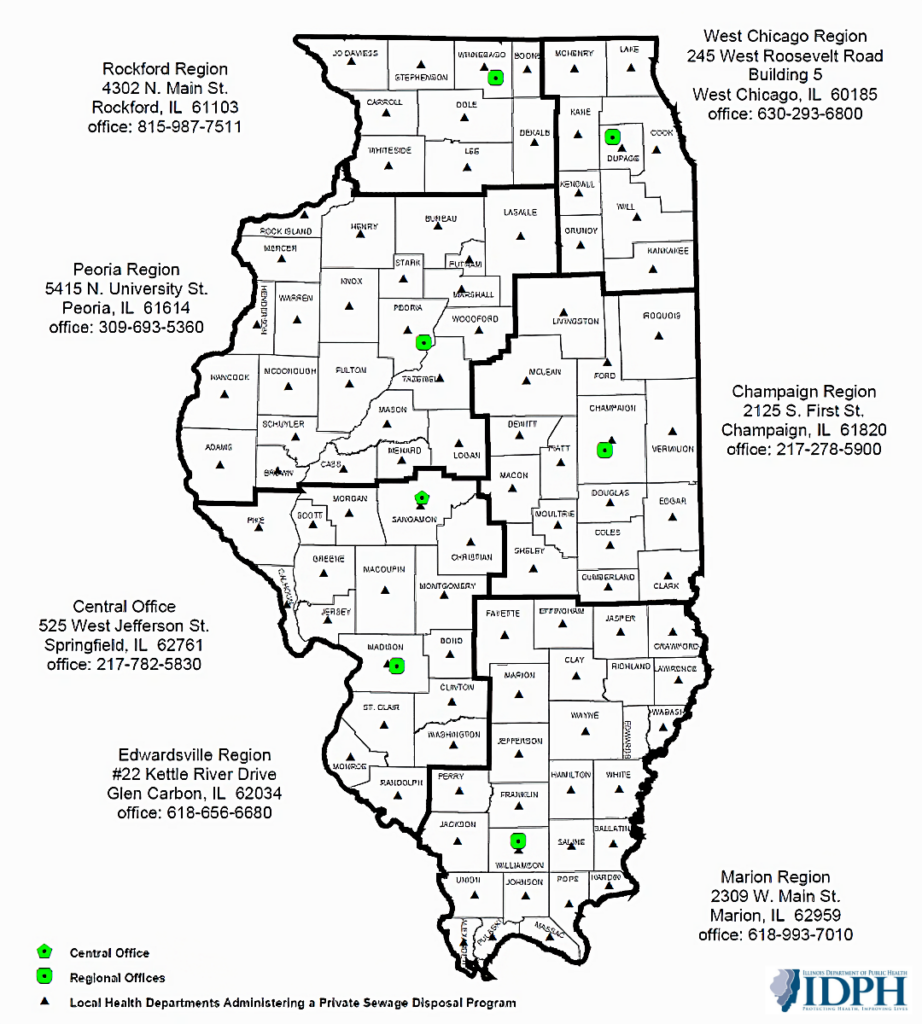
Illinois state septic tank regulations allow for the installation and use of a septic tank, Imhoff tank, or aerobic treatment unit in conjunction with the following treatment systems:
- Subsurface seepage field, also known as a drain field, leach field, or effluent field
- Seepage bed
- Sand filter, either buried or re-circulating
- Waste stabilization pond
- Gravelless drain field
- Chamber system
- Peat filter system
- Subsurface drip irrigation system
Illinois Septic Tank Definitions
Illinois state administrative code and public health departments may refer to functional and operating septic systems as either a Private Sewage Disposal System or an Onsite Wastewater Treatment System (OWTS). These descriptions indicate the point of installation and purpose and indicate a collective set of components that work together to create a system for effectively managing human waste generated daily by a property. The 77 Ill Admin Code 905 maintains the state’s official definitions, standards, and expectations for septic tanks and sewage disposal systems for use in the State of Illinois.
Can I Install My Own Septic Tank in Illinois

A property owner may be able to install their own septic tank system in Illinois depending on local county rules and the type of private sewage system. Some counties or regions in Illinois permit a homeowner to DIY install a septic tank if they can comply entirely with the state’s regulations. Additionally, self-installation is often limited to a conventional, gravity fed septic tank system due to the complexities and additional requirements of alternative systems.
It is important and highly recommended to follow all state regulations concerning septic tanks and their installation, and to ensure the rules are or have been followed, to prevent costly fines or potential problems in the future. Certain homeowner activities can result in a mandatory inspection or assessment of the onsite wastewater system, and if it is found to be lacking in some regard, the owner may face disciplinary action and have to bring the system into compliance.
In the State of Illinois, homeowners are generally required or encouraged to hire a certified contractor to install a septic tank system. This is due to the intensive work demands of the project and to ensure the installation complies with all state regulations that are in place to protect public health and the environment. Here are some key points:
- Certification Requirement: When a contractor is hired to perform installation, they must be a state certified and licensed professional who has completed the necessary training and has the expertise to meet state guidelines.
- Permit Requirement: Any construction, repair, or alteration of a septic tank system requires a permit from the relevant local health department. Obtaining these permits can be a work intensive undertaking which certified contractors are often more familiar with and better prepared for.
- Inspection and Compliance: After installation, septic systems must pass inspections to ensure compliance with state regulations. Certified contractors are familiar with these requirements and can help ensure the system meets all necessary standards.
- Complexity and Safety: Installing a septic system is a multi-step process involving soil analysis, system designing, precise placement, and labor intensive construction activities that certified professionals are equipped to handle safely and effectively.
For detailed guidance and compliance information, homeowners should consult their local health departments or the Illinois Department of Public Health. For additional information, you may refer to the IDPH’s Private Sewage Disposal Code (77 Ill. Adm. Code 905) or contact a certified professional to discuss your specific needs and options.
How to Install a Septic Tank in Illinois
Installing a septic tank in Illinois is a complex process that must meet the regulations set by the Illinois Department of Public Health (IDPH) and the Environmental Health Protection Division. The following outlines the general steps involved. Always consult with certified professionals and your local health agency for assistance and to verify you will be in compliance with all applicable laws.
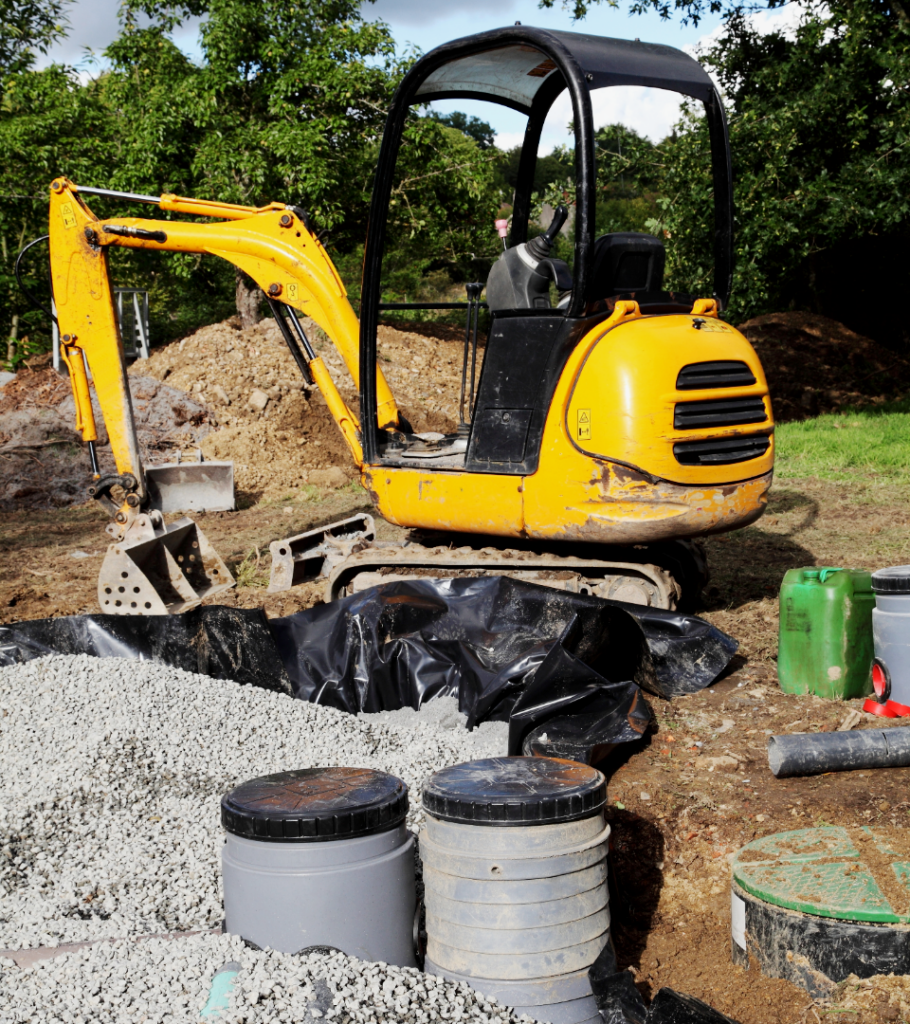
Step 1: Planning and Design
Site Evaluation
- Soil Testing: Have a percolation test performed by a professional engineer or soil classifier to determine the soil’s absorption rate.
- Site Assessment: Have the site evaluated by a professional to assess topography and proximity to wells, water bodies, property lines, and other structures.
System Design
- System Sizing: Determine the required septic tank and after treatment size based on household bedroom size.
- System Type: Determine the appropriate septic tank system type based on the site assessment results.
- Component Selection: Choose the appropriate tank, components, and equipment based on the system type that comply with IDPH regulations.
Step 2: Obtaining Permits
Local Health Departments
- Standard Systems: Submit all required information to obtain the permits needed from local health departments before beginning construction activities.
Step 3: Excavation and Installation
Excavation
- Marking the Site: Use a site map or design plans to mark out the exact location where the septic tank system will be installed.
- Excavating the Area: Excavate the area according to the design requirements and the installation manual provided by the septic tank manufacturer.
Installing the Tank
- Placing the Tank: Position the tank in the excavated area making sure it is level and stable.
- Connecting Components: Install inlet and outlet pipes, baffles, and other components such as distribution boxes according to design specifications.
- Backfilling: Carefully backfill around the tank to avoid damaging components while using approved backfill material and following manufacturer’s procedures.
Step 4: Leach Field Installation (If Used)
Preparing the Field
- Trenching: Dig trenches for the leach field, matching the design plan.
- Laying Pipes: Place perforated pipes or alternative treatment systems as specified in the approved design.
Covering the Field
- Gravel Layer: Add a layer of gravel or other approved material around the pipes.
- Soil Cover: If a post-construction inspection is required by the local health department, do not complete backfill over the system. If an inspection is not required, cover the entire system with a layer of soil, grading the surface to direct runoff away from the system.
Step 5: Inspection and Testing
Initial Inspection
- Regulatory Compliance: Have the installation inspected by a local health department official, if required – 77 Ill Admin Code 905 does not specify a mandated pre-cover inspection; however, county public health departments often require an inspection.
- System Testing: Conduct an initial system test to ensure it operates correctly.
Step 6: Ongoing Maintenance
Regular Inspections
- Scheduled Checks: Follow a regular inspection schedule, typically every 1-3 years, to maintain system performance.
- Professional Services: Utilize certified professionals for routine maintenance and any necessary repairs.
Pumping and Cleaning
- Septic Tank Pumping: Schedule pumping every 3-5 years or as recommended based on system usage and capacity.
- System Cleanliness: Keep the system free of non-biodegradable materials and excessive grease to prevent blockages and failures.
Should I Install My Own Septic Tank System in Illinois
While self-installation of a septic tank system may be possible in Illinois, the entire project requires an appreciable amount of research and understanding of regulations as well as the personal capacity to complete permitting, designing, excavation, and construction. Due to this, often it is only the most dedicated DIYers or those with prior construction experience who opt to install a septic tank themselves. For others, they often choose to employ the services of an Illinois state certified contractor. See the following for a list of Illinois certified septic tank installers to find a professional near you for your project.
Can a Polyethylene Septic Tank Be Installed and Used in Illinois
Yes, polyethylene septic tanks are approved for installation and use in various septic systems in the State of Illinois. However, only polyethylene septic tanks that have been reviewed and approved by the Illinois Department of Public Health can be used without resulting in fines or corrective actions. To be approved, a plastic septic tank manufacturer must submit detailed specifications and information regarding their products, which state personnel will review to verify they meet the state’s code requirements. Most reputable and noteworthy manufacturers meet Illinois’ requirements and have been approved. This includes plastic septic tank manufacturers Norwesco, Ace Roto-Mold, and Snyder Industries.
Illinois code permits the use of both single compartment and two compartment polyethylene septic tanks. Minimum sizes start at 750 gallons. If looking for Illinois approved septic tanks to complete your construction project, the National Tank Outlet is a trusted, nationwide supplier with some of the industry’s largest selection and most competitive pricing.
Key Illinois Septic Tank Requirements
Permits
In Illinois, a permit will be required before any excavation or building activities can be performed for the installation, repair, or alteration of a private sewage disposal system. Before a permit can be received, state codes require a site evaluation, soil classification, and a design plan proposal be completed. When these necessary steps have been completed, the results can be submitted to the local health department for review and permit approval. If a homeowner intends to DIY install a septic tank, some county health departments may encourage a personal meeting to discuss the project, answer any questions, and assist in guidance.
Site Evaluations
A site evaluation is a mandatory part of the septic system installation process. Illinois regulations require the site evaluation to be performed by a professional engineer, a certified soil classifier, or by state personnel who are trained with experience.

The site evaluation will include a thorough assessment of the property in terms of geology, topography, groundwater characteristics, nearby surface water, soil absorption rates through a percolation test, and other relevant information. The results of the site assessment and soil evaluation will provide the basis for a designer or engineer to determine the proper placement and suitability of the site for various septic tank systems.
Septic System Siting and Design
In the State of Illinois, the septic tank construction process leads stepwise from a soil evaluation and site assessment to the planning and designing of the required system based on the results of these evaluations. Regional and county health departments typically require a licensed septic tank designer or a certified professional engineer (PE) to take the site information and design an appropriate onsite sewage system.
When it comes to site placement and system location, there are minimum setback distances required from certain property features or utilities to avoid damage or future problems to either the system or the feature. Review the following minimum setback distance table from the Illinois administrative code for an idea on expectations.

System Components
Required septic tank system components will depend on the type of treatment system to be installed. In general, for conventional gravity fed sewage systems, components include the septic tank, a distribution box, PVC pipe, drain lines for the effluent field, and backfill material such as gravel. Illinois regulatory code allows the use of either a one compartment or two compartment septic tanks and requires inlet and outlet baffles (sanitary pipe tees are acceptable), an effluent filter, and manway extension risers. Manway risers are required to bring the septic tank’s access up to surface grade for easier maintenance and inspection.
In the State of Illinois, it is required to use specific components and septic tanks that meet the state’s standards and are approved. Norwesco brand polyethylene septic tanks are an approved and trusted choice for Illinois septic tank projects. If looking for or wanting to review Norwesco plastic septic tanks, the National Tank Outlet proudly offers one of the best selections available online.
Septic Tank Sizes in Illinois
In the State of Illinois, administrative code specifies a minimum size for septic tanks to be used in conventional, gravity fed sewage systems based on the number of bedrooms in a residential home. According to the Private Sewage Disposal Code, a 725 gallon septic tank minimum is required for 2 or less bedrooms, a 1000 gallon septic tank for 3 bedrooms, a 1250 gallon septic tank for 4 bedrooms, and up.
See the following table summarizing minimum septic tank sizes per Illinois state regulations:
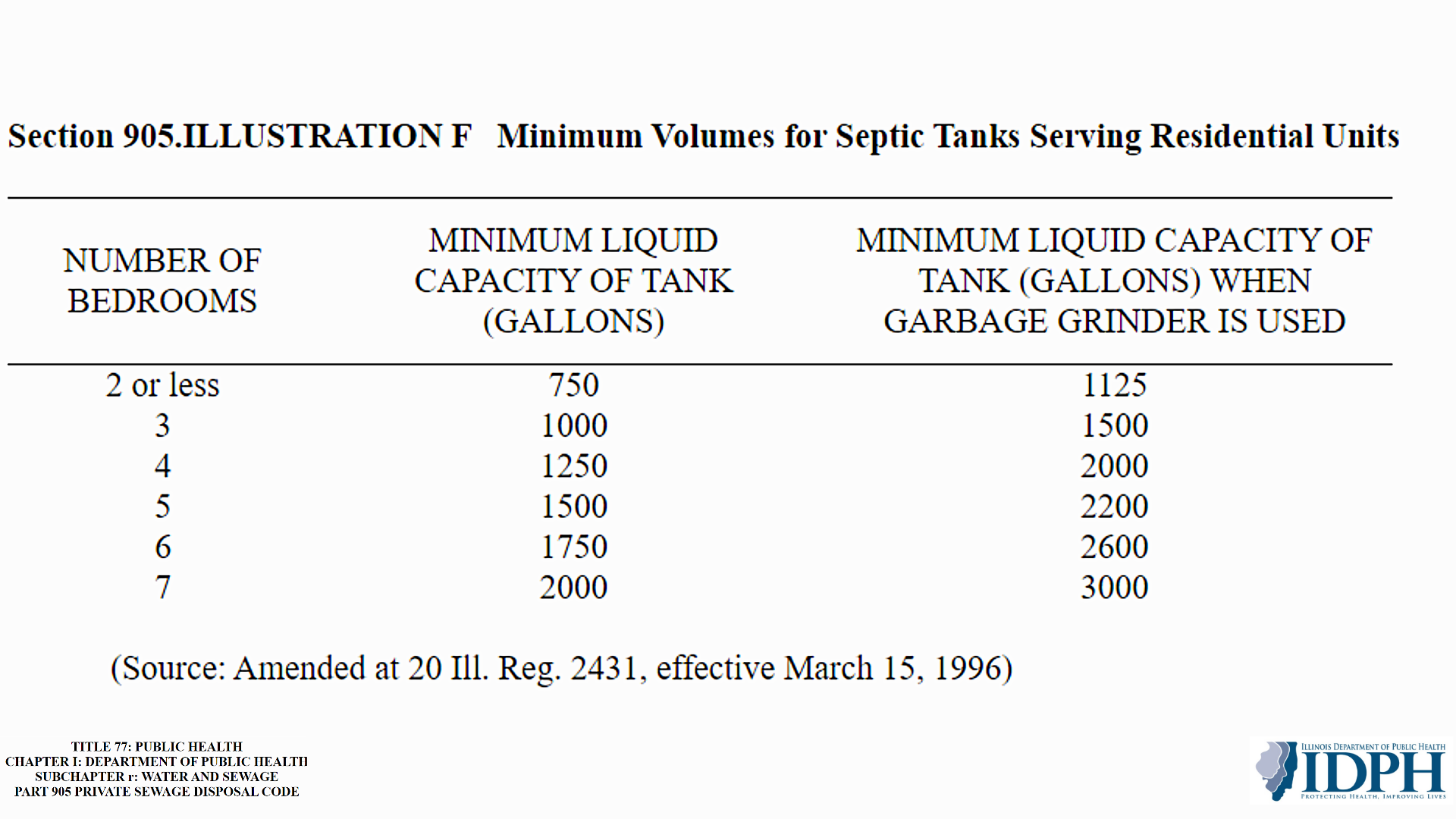
Inspections
An inspection of the septic tank system following construction and before full backfill covering is often mandatory. The requirement may depend on the region or county, and it is recommended to contact the department for verification. A mandatory inspection will have to be performed by state personnel and will be an evaluation to ensure the installation followed the planned design without deviation and fully complies with state regulations.

If all steps of the process were properly followed, passing inspection should not be difficult. After a passed inspection, the new system can now be put into service.
Additional Regulations
Private septic tanks for residential properties must undergo evaluation within 3 years of installation. The assessment can be done by the homeowner, a system installation contractor, an Environmental Health Practitioner, an Illinois licensed Professional Engineer, a department representative, or a local health department agent. The evaluation checks for scum and settled solids exceeding 33% of the tank’s liquid capacity. If levels are high, pumping and maintenance are required. Subsequent evaluations should occur at least every 5 years, with more frequent checks based on system usage.
Maintenance and Pumping
Regular maintenance through pumping and cleaning of the effluent filter is critical to ensuring a conventional septic tank system continues to work properly, efficiently, and without problems. Failure to pump a septic tank to remove accumulated solids can result in backups, clogs, or other system damages, leading to costly repairs.
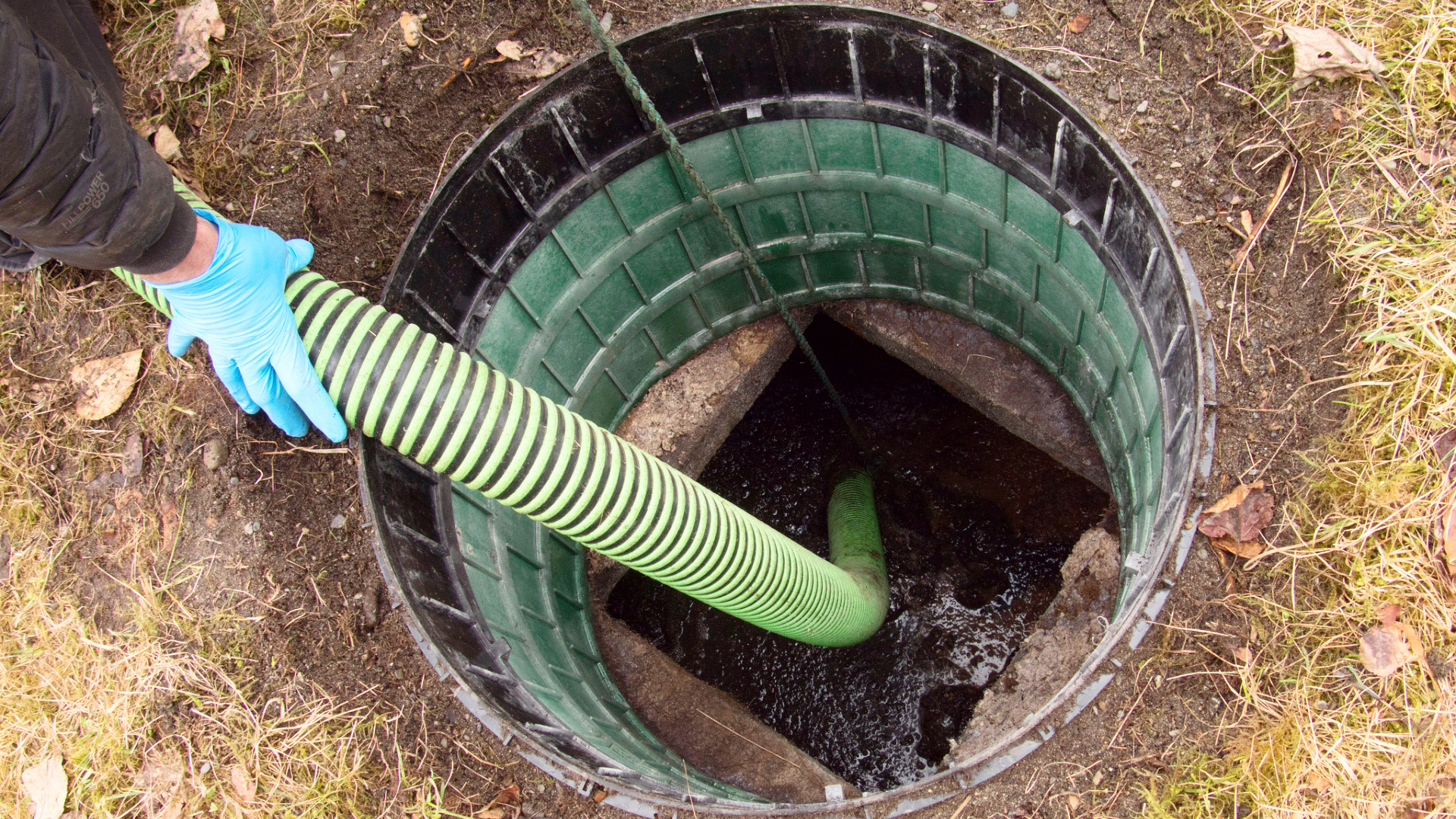
The Illinois Environmental Protection Agency recommends a typical residential septic tank system be pumped every 3 to 5 years depending on the tank size and number of residents.
Need a Septic Tank in Illinois? Choose the National Tank Outlet to Supply
If you’re searching for a reliable, cost-effective solution for a wastewater project in Illinois, consider National Tank Outlet’s range of underground septic tanks. Our products are engineered for durability and easy installation, offering a long lasting, reliable solution to septic tank systems and managing onsite created waste.
With a full range of septic tanks made by today’s top manufacturers, we offer a wide selection of Illinois approved septic tanks available online at competitive prices and ready for shipping nationwide. National Tank Outlet is committed to providing superior products and service. Contact us today for questions, contractor quotes, and more.
Additional Resources
- Private Sewage Disposal | Illinois Department of Environmental Health Protection
- 77 Ill Administrative Code 905 Private Sewage Disposal Code | Illinois General Assembly
- Private Sewage Contractor Search | IDPH
- Regional Health Departments and Contacts | IDPH
- Septic Systems: An Overview | McLean County Health Department
Disclaimer: This guide is intended to provide general information and expectations around the installation and requirements of a septic tank and system in the state of Illinois and is not intended to substitute for advice, legal counsel, or consultation from state departments or licensed professionals. The information provided is current and accurate to the best of our knowledge at the time of this writing. For specific advice on your individual situation, please consult with the Illinois Department of Public Health (IDPH) Environmental Health Protection Division, a local health unit, or a professionally licensed septic tank contractor.
